I always tell my father not to go to Pahang. The reason being that 'Pa' gets 'hang' there. LOL... Okay, super LAME joke. The other joke is that I thought I've never stepped foot in the Malaysian state of Pahang before when I actually had. And many times.
If like me, you've been to Genting Highlands, Cameron Highlands, Mersing (to get to Tioman Island) or the beaches of Kuantan, you've touched Pahang grounds. I didn't know that until this trip to visit Kuala Medang Homestay and the National Elephant Conservation Centre in Kuala Gandah. They are all in Pahang... which goes to show that the state which often lets its attractions precede its name is a treasure trove of getaways up in the mountains, to the beaches, and everything in between!
 |
| A return to innocence with orang asli kiddos at an aboriginal village in Pos Pantos. |
Since I've been to Genting and Cameron Highlands (abet at a very young age) and passed by Kuantan on the way to Tanjong Jara Resort, this visit to Kuala Medang Homestay and Kuala Gandah filled the gap of exploring Pahang's inland.
However, our day trip to the two attractions in Pahang was rather short and insufficient to fully experience all the activities they have to offer.
Karak Expressway - The Haunted Highway
As we made our way to Pahang from Kuala Lumpur, we took the Karak Expressway which is also frequented by tour coaches to Genting Highlands. We were well on our way speeding along the highway when our guide, Jack, turned around and told us this story...
And if a garang motorist tries to overtake the yellow Volkswagen, he will notice that the yellow car has no driver!
The yellow Volkswagen account is just one of the many horror urban legends that the highway is notorious for. Another story traced the encounter of a tired driver who stopped by the roadside for a nap because he was tired only to be woken up by a boy tapping on his car's window. Curious that such a young boy is alone on a highway at night, he rolled down the window. The boy asked, "Have you seen my mother?" The driver replied that he has not seen anyone along the highway at such a late hour. But the boy persisted with his question.
Sensing that something wasn't quite right, the driver rolled up his window and sped off. He then took a glance at his rearview mirror and saw that the boy was running after his car! Panic-stricken, he looked back at his steering wheel and stepped on the accelerator.
As his car sped to over 100km/h, he heaved a sigh of relief.
Then he heard tapping on his window... the boy was running right next to him.
Apparently, there was an accident on Karak Highway where a young boy and his mother were killed on the spot. While the boy's body was secured to the car by seat belt, his mother's body smashed through the windscreen and landed some distance away.
The hauntings on Karak Expressway were so well-known and a part of the Malaysian folklore that a horror movie stringing all the paranormal stories was made in 2011. Here's the trailer...
I was seated at the back of the minivan and took the above photo of the highway through the back window. Thankfully I didn't see any yellow Volkswagen, boy or anything unholy!
Kuala Medang Homestay Half-Day Tour
After a two-hour ride from Kuala Lumpur with no boy tapping on our window, thank God, we arrived at Kuala Medang Homestay.
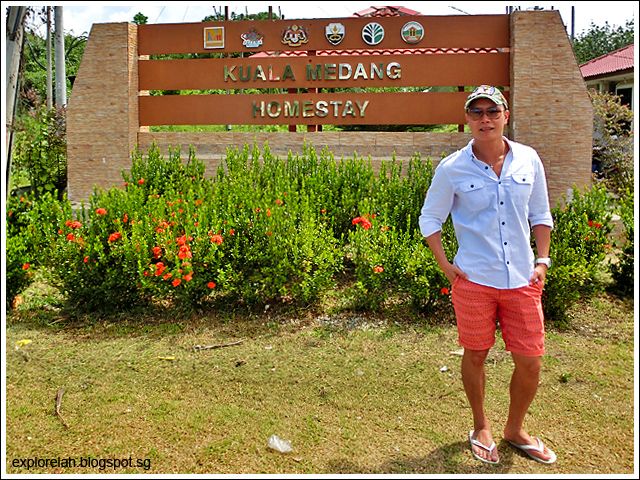 |
| Kuala Medang Homestay offers visitors an opportunity to become one of the locals. The homestay village has won several accolades and named one of the best homestay experiences in Pahang. |
However, it seems that the activities are catered more for big groups (eg. school and packaged tour groups with a minimum of 30 pax) at the moment and I'm not sure if free and independent travellers (ie. single, double, or less than 10 in a travelling group) can partake or join big groups to experience the activities.
 |
| A central hall at Kuala Medang village where homestayers can converge. |
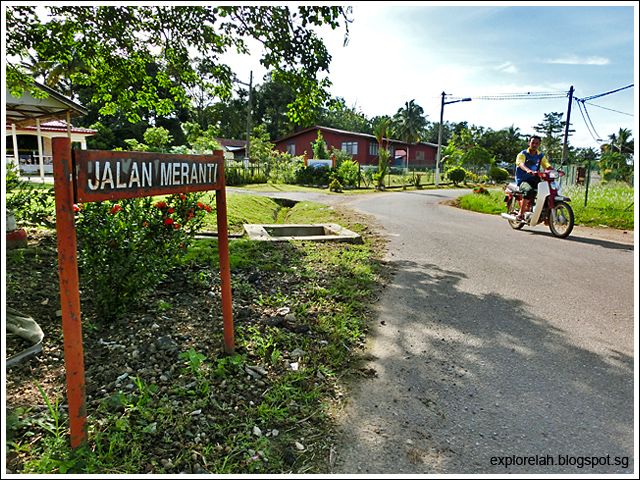 |
| While taking photos, I walked into the courtyard of someone's house and small streets. The few villagers I encountered were friendly with ready smiles. |
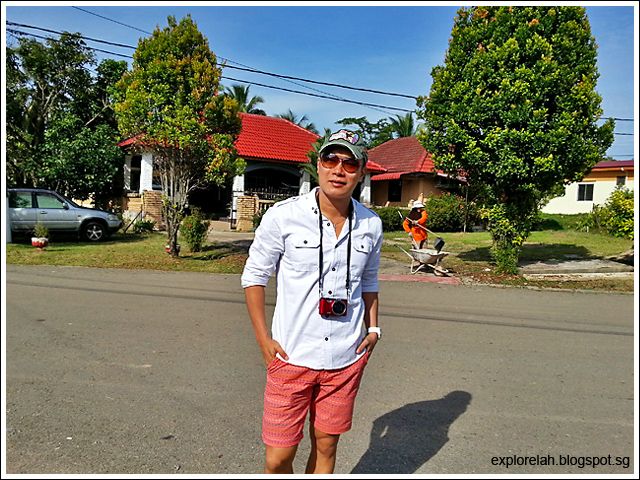 |
| The bungalows for homestay looked really comfortable although I didn't venture inside. |
 |
| What's cooking? One of our hosts preparing to feed us with Kuala Medang's specialty... |
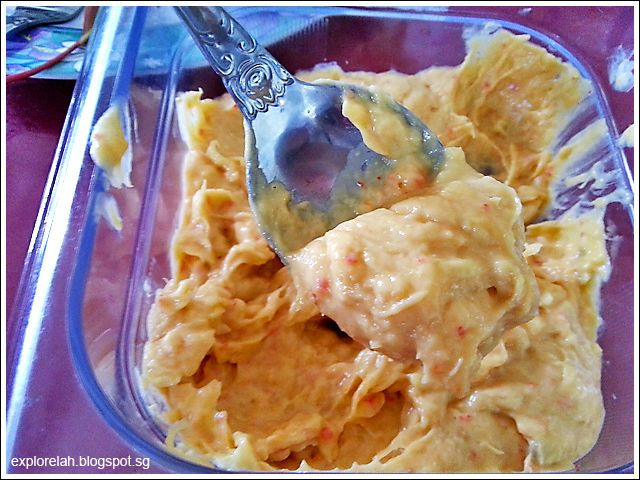 |
| Fans of chilli and durian would get a high from this paste. It made for a really tasty dip for ayam goreng (fried chicken). |
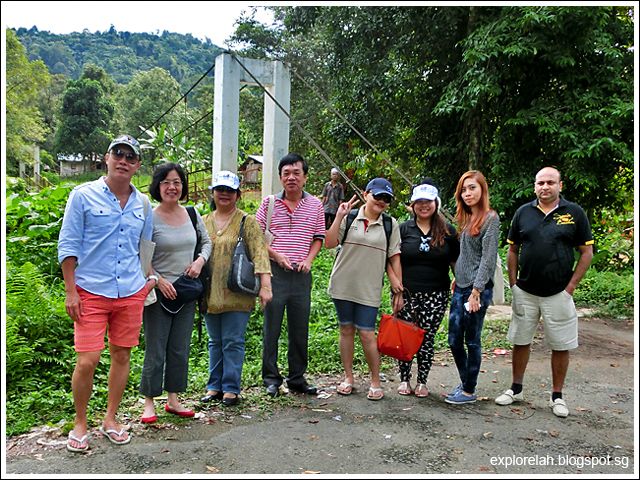 |
| A group photo with my trip's travelling companions at the mouth of a suspension bridge leading to Pos Pantos' orang asli village. |
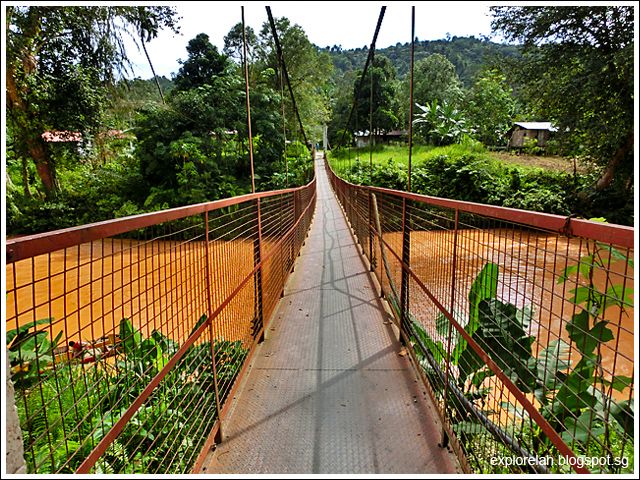 |
| Bridge over |
 |
| The moment we arrived at the village, we were crowned with hand-woven garlands that made us go... "I like to move-it move-it!" Heh heh... Photographed here with the granny who organicessorised me. |
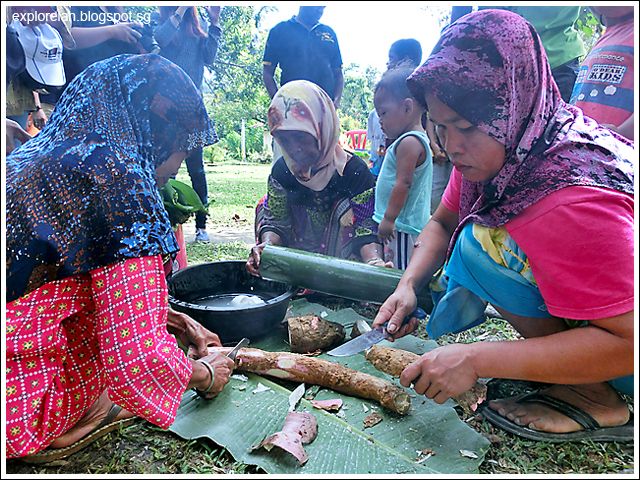 |
| Orang aslis obtain their food sources from the forest (such as tapioca), hunt for games, or fish in the rivers and streams. Here, the womenfolk are skinning tapioca roots. |
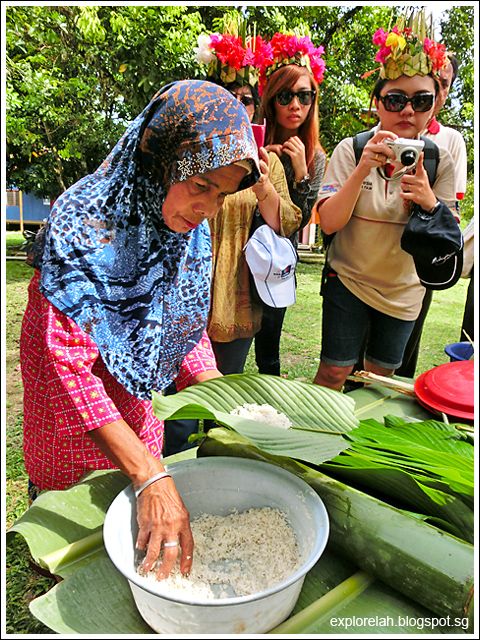 |
| It was a feast to be inducted into the way food was prepared the traditional way. We tried our hands at preparing leaf wrapped rice too. |
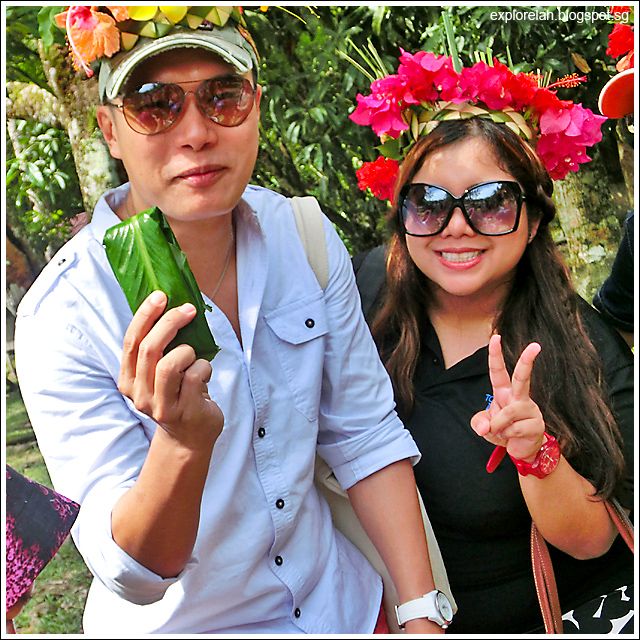 |
| Tada! My orang asli lerek leaf wrapped rice. |
 |
| Open sesame! Piping hot forest-flavoured rice cakes is served. |
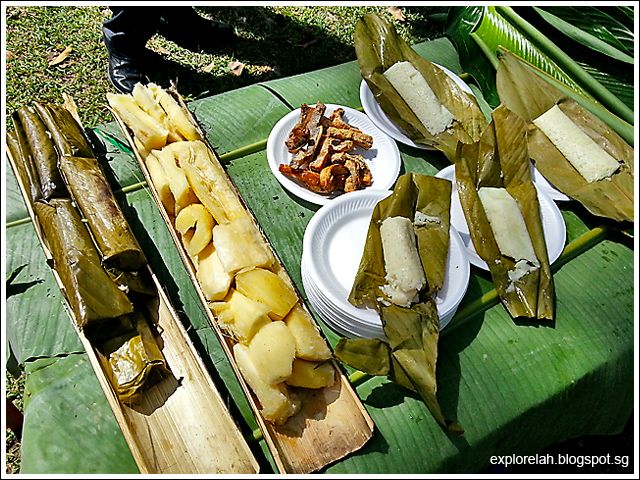 |
| Bamboo cooked tapioca and rice eaten with crispy salted fish. It's a very simple meal but pretty appetizing. |
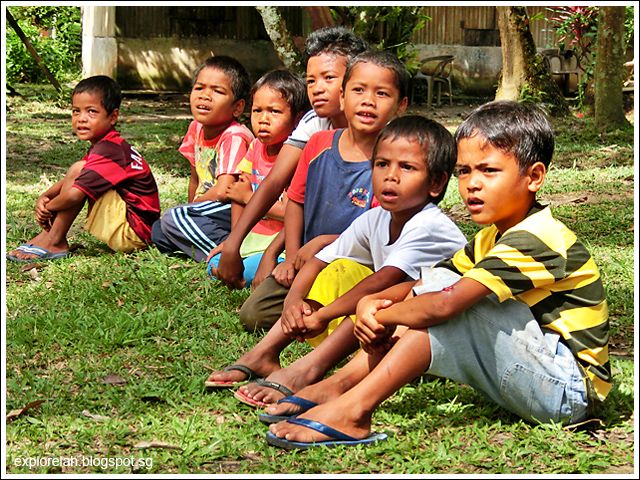 |
| The village boys sat spellbound looking at us city folks wielding their tribe's hunting weapon. I think they look worried. |
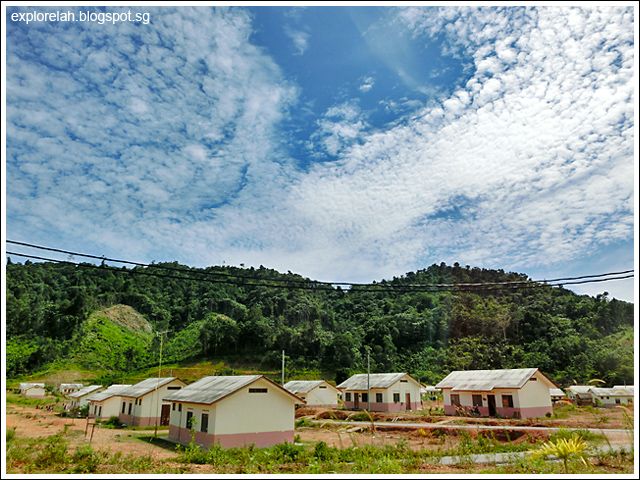 |
| Homes built by the Malaysian government to rehouse orang aslis who left their forest dwellings. |
It's invaluable to have visited the original orang asli forest village at Pos Pantos with its remaining aboriginal residents for a glimpse of their idyllic lifestyle before they too opt for the convenience of modernization.
National Elephant Conservation Centre (Kuala Gandah)
After a very bumpy 2-hour van ride from Kuala Medang Homestay, we arrived at the elephant sanctuary. The best way to get here would be to charter a vehicle or take a cab. Contact the centre for more info at 09-2790391.
As the only one such rescue and rehabilitation shelter for elephants in Malaysia, the National Elephant Conservation in Kuala Gandah educates visitors on the importance of harmonic co-existence with nature while providing an opportunity to get upclose with the long nosed giants. If you enjoy ecotourism, this place would satisfy your green appetite.
As we arrived rather late, we missed the various activities and video presentations that the centre has. Daily activities start from 10.30am onwards with the highlight being a chance to bathe the elephants in a nearby river at 2pm.
Unfortunately, the water level was too high on the day of our visit and the bathing activity was cancelled. If you are lucky enough to take a dip with the elephants, bring a change of clothes and towel. Entrance price to the centre varies with the number of activities you want to engage in. We got the ticket that allowed us to see and feed the stompers.
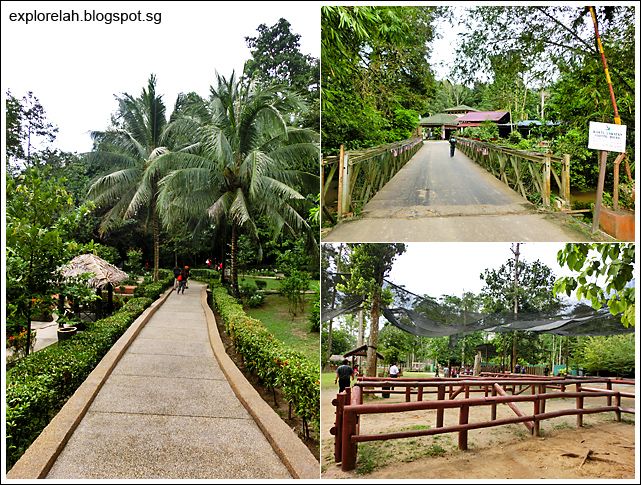 |
| I imagined the conservation centre to be a mud pit like the elephant camp I've been to in Chiang Mai but this one is pretty well kept, landscaped and doesn't smell bad. |
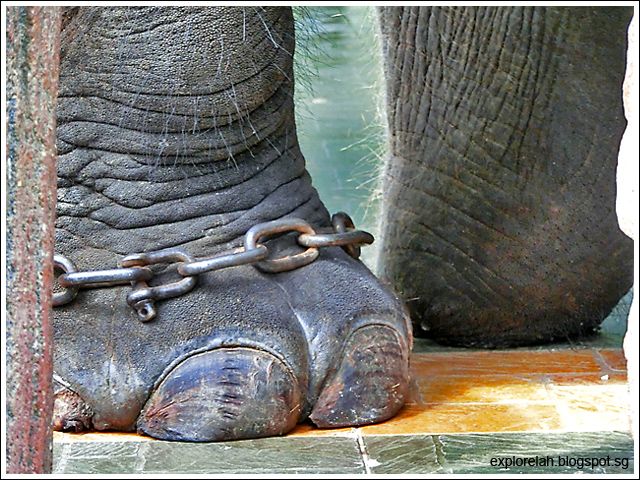 |
| One of the elephants had her feet cut off from a trap set by hunters. |
 |
| An orphaned baby elephant that's about two years old. It has such a happy face! |
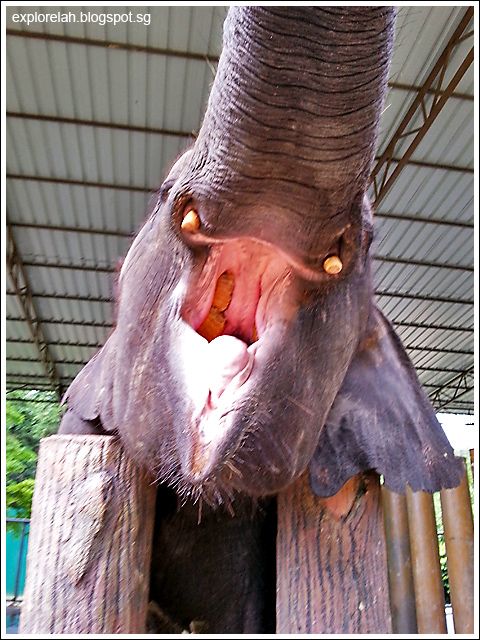 |
| Without Googling, do you know how many teeth does an elephant have? Answer at the end of this blog post. |
As the number of Asian elephants in the wild is dwindling due to illegal poaching, urbanization and deforestation for farming, the National Elephant Conservation Centre plays an important role to rescue and relocate the distressed animals. I think what the centre tries to accomplish and the work of the volunteers are admirable to preserve Malaysia's wildlife.
Shuttling out from the hyper-urbanized, metropolitan skyline of Kuala Lumpur to the rustic meanderings at Kuala Medang Homestay, the orang asli village and the elephant conservation centre, it's amazing how the scenery and pace of life changes so completely. But that's Malaysia. There's the choice to be lapped up in the luxury of modern extravagances, or put city life on pause mode and go wholeheartedly back to basics.
Oh... and here are the answers to the elephant trivia :
- an elephant has 26 teeth but they are arranged into four blocks of massive chompers so technically, an elephant has 4 teeth
- the evenly spaced set of footprints belong to a female elephant and the set with the hind prints wider apart belongs to the male (because of the animal's testicles!)
This post has been made possible by Tourism Malaysia (Singapore Office).
Related Post :
Kuala Lumpur - A Weekend of Fashion, Food & Fun

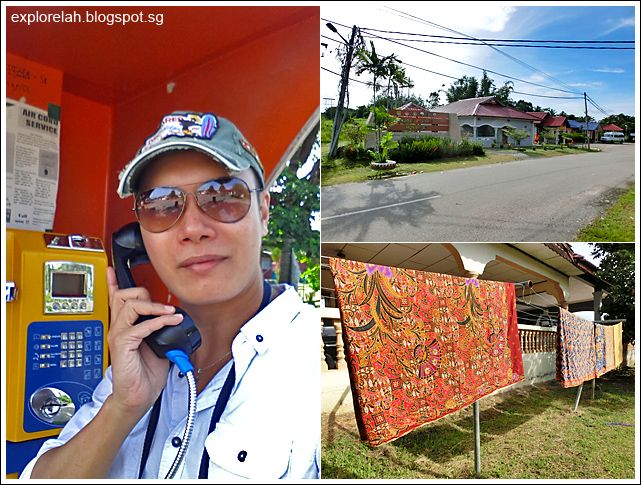
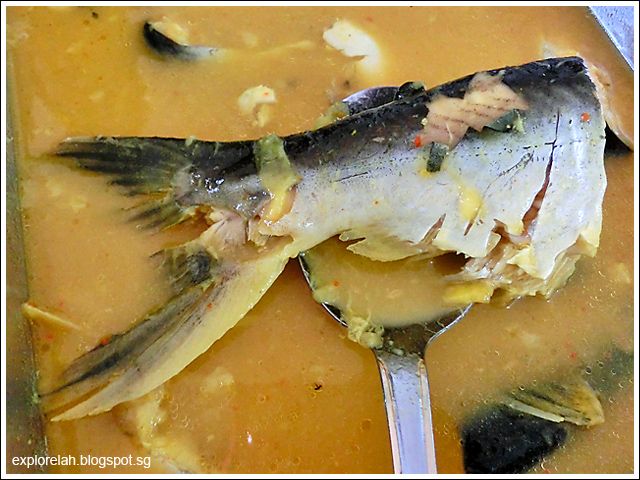
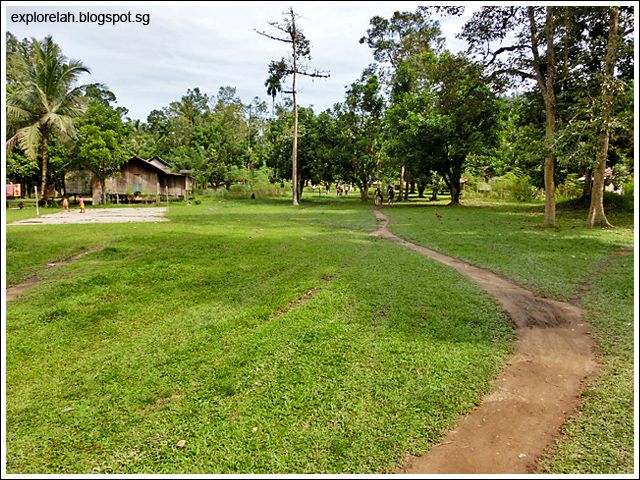

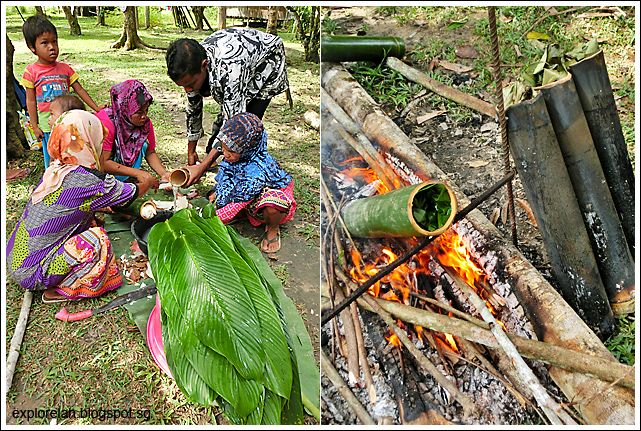
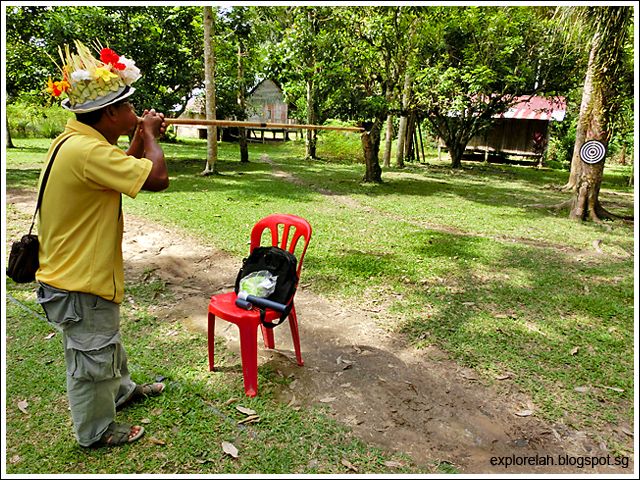

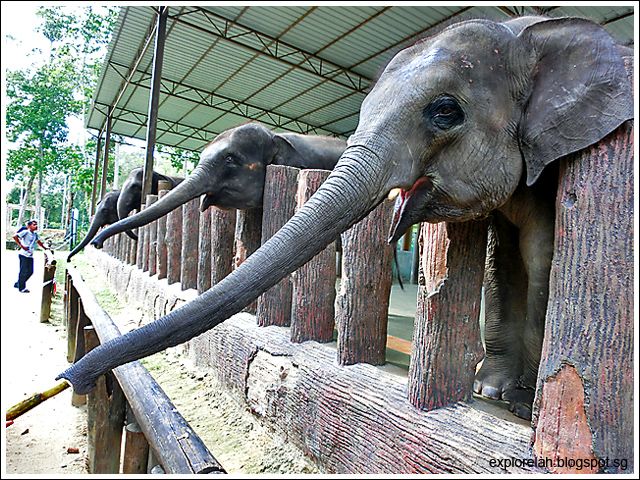
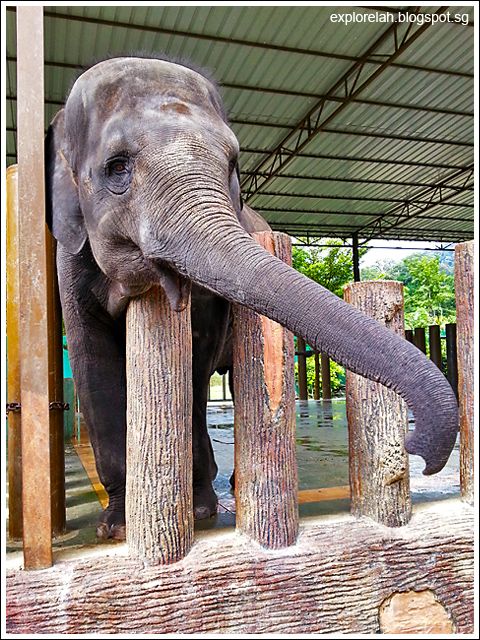
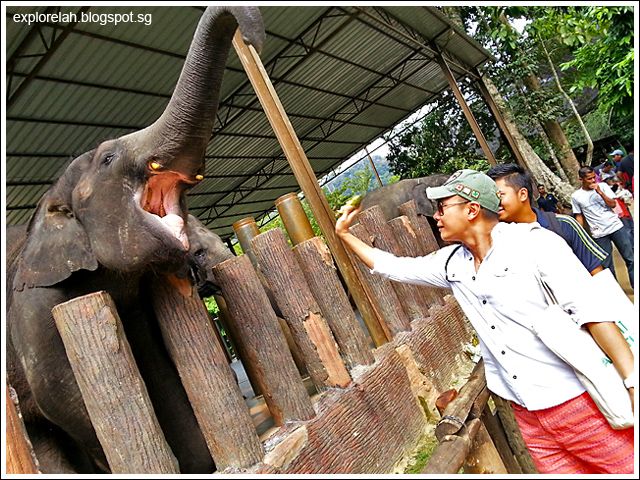


No comments:
Post a Comment